Mastering SLM Metal Printing Fundamentals
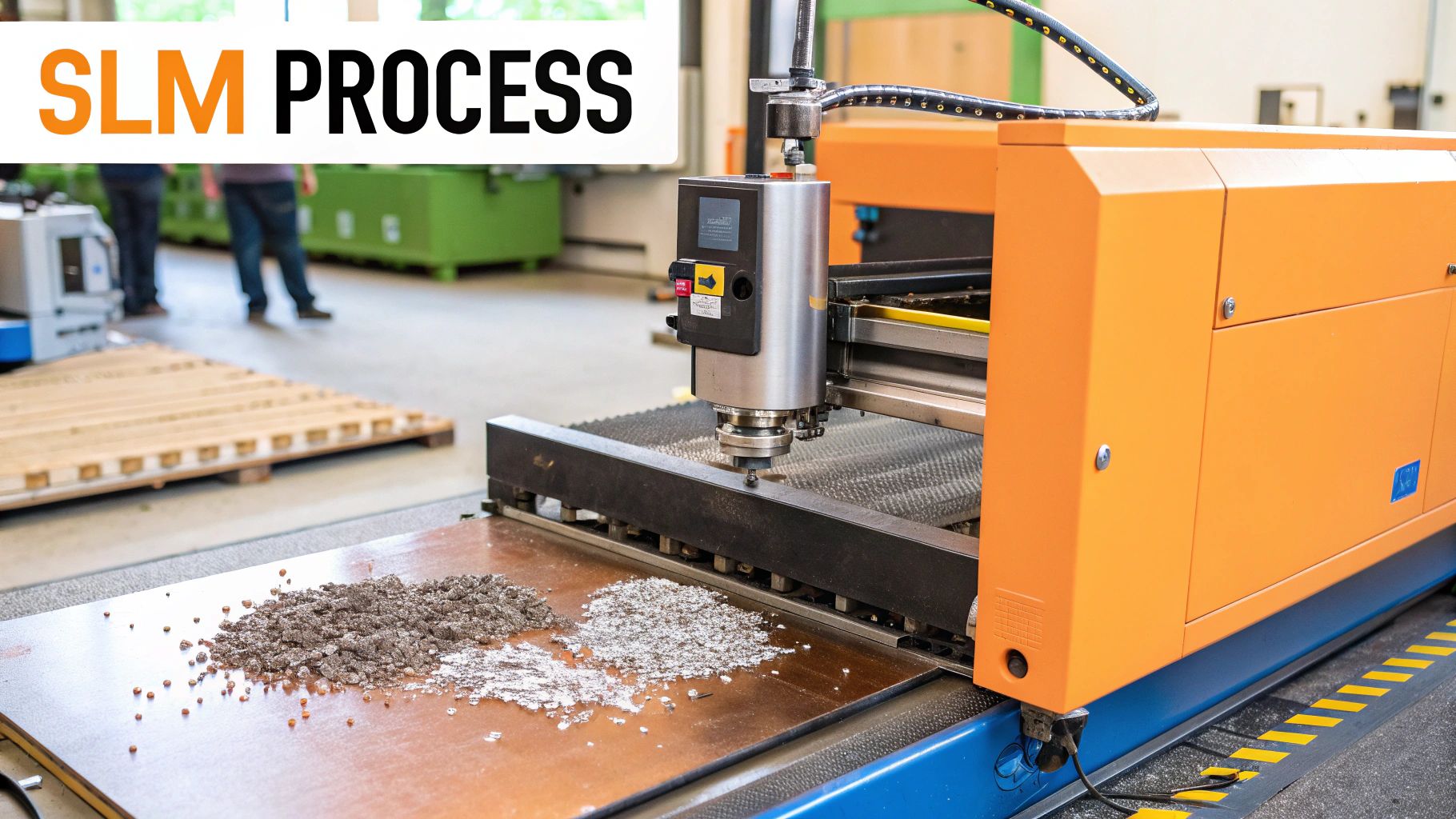
Selective Laser Melting (SLM) offers incredible potential for creating complex metal components with remarkable precision. Achieving the best results, however, requires a solid understanding of the core principles behind this intricate process. This section explores the essential aspects of SLM, highlighting its key benefits and emphasizing the importance of process optimization.
Understanding the SLM Process
SLM, also known as Laser Powder Bed Fusion (L-PBF), constructs metal parts layer by layer using a high-powered laser. The process begins with a thin layer of metal powder spread across a build platform. A precisely controlled laser then selectively melts the powder according to the component's digital blueprint.
This process repeats layer upon layer, fusing the material and progressively building the three-dimensional object. Once the build is complete, the excess powder is removed, unveiling the final product.
SLM is a prominent technology in metal printing and has significantly evolved over time. Optimization of key parameters like laser power, scanning speed, and layer thickness is vital for enhancing product quality. For instance, research indicates that increasing layer thickness can decrease manufacturing time by up to 40%, but it can also impact surface roughness.
The efficiency of SLM is comparable to traditional methods like forging. Studies show it can produce parts with similar mechanical load performance. In recent years, SLM has become vital for industries needing complex metal parts with specific mechanical attributes. Learn more about SLM and L-PBF in this study: Metal Additive Manufacturing and its Applications in the Biomedical Field: A Comprehensive Review.
Key Components of an SLM System
Several key components contribute to the precision and effectiveness of SLM. The laser source, frequently a fiber laser, provides the energy needed for melting the metal powder. A precise scanning system guides the laser beam, ensuring accurate material placement.
A powder handling system is also crucial, consistently delivering and distributing the powder across the build platform. These components work in concert to maintain a controlled environment, essential for high-quality parts.
Why Optimization Matters
Optimization in SLM is critical for achieving consistent quality and efficiency. It's not just a best practice—it's a necessity. By meticulously adjusting parameters, manufacturers can drastically improve the mechanical properties, surface finish, and overall part performance. When implementing optimization strategies, remember to use techniques like load performance testing to accurately assess improvements.
Optimization also minimizes material waste, reduces build times, and lowers production costs. This makes SLM a more viable and cost-effective manufacturing solution across diverse industries. This commitment to optimization is what unlocks the full potential of SLM technology.
Critical Process Parameters That Actually Drive Results
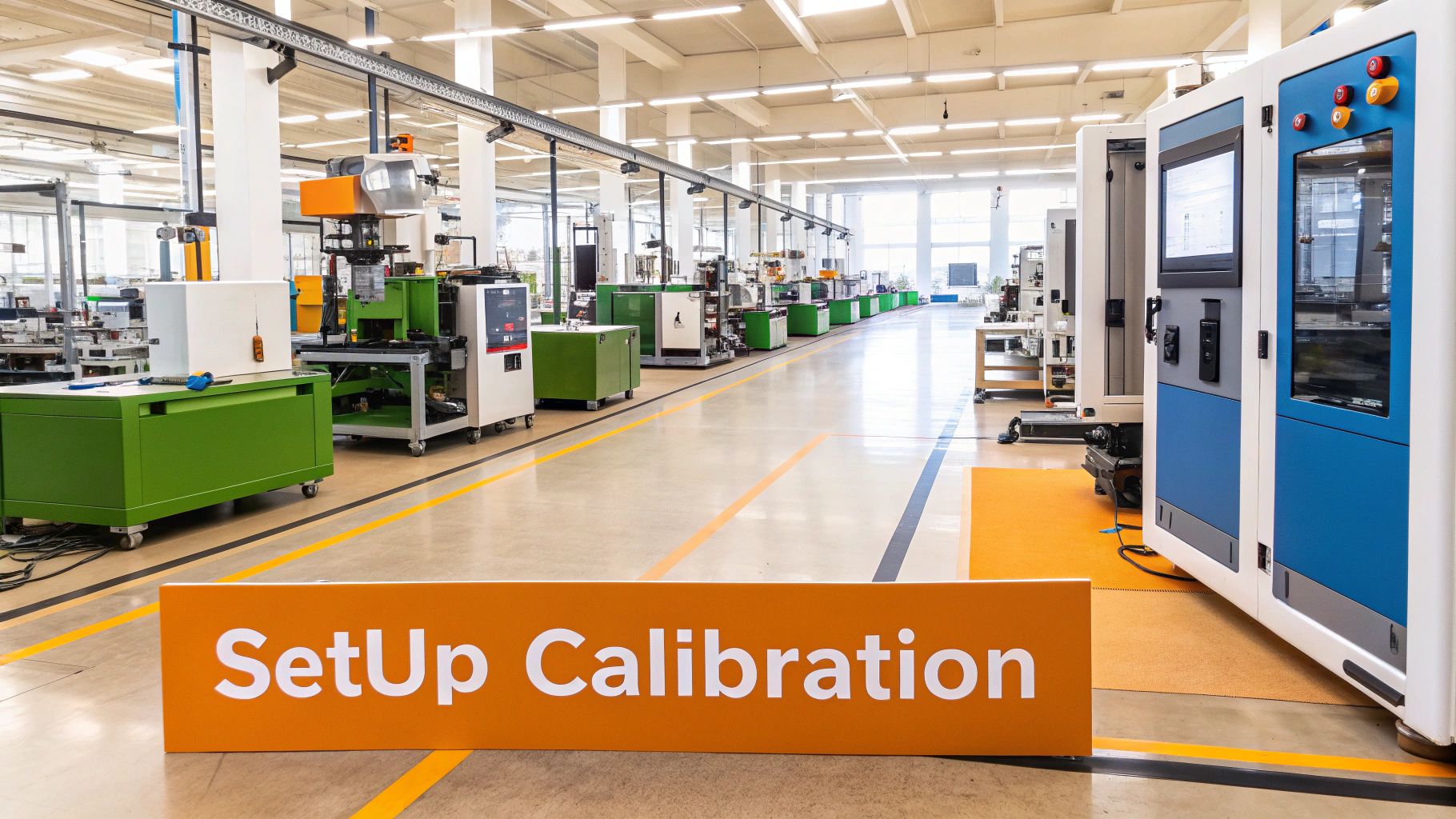
Beyond the basics of Selective Laser Melting (SLM), lie the crucial process parameters that truly determine the quality of the final product. This isn't theoretical; it's about understanding how adjusting settings like laser power, scan speed, hatch spacing, layer thickness, and beam diameter affects the part. These parameters have complex interactions. Optimizing them is essential for successful SLM metal printing.
Laser Power and Scan Speed: Finding the Right Balance
Laser power and scan speed are intertwined. Higher laser power allows faster scan speeds, potentially decreasing build time. But, too much power can cause overheating, part distortion, and a poor surface finish. Slower scan speeds, with the right laser power, allow better melt pool control, leading to denser parts and a smoother surface. The balance between these two is key.
The following table summarizes key SLM process parameters and their effects:
Key SLM Process Parameters and Their Effects Comprehensive comparison of critical SLM parameters showing their impact on various quality aspects and performance metrics
| Parameter | Typical Range | Effect on Density | Effect on Surface Finish | Effect on Build Time | Effect on Mechanical Properties |
|---|---|---|---|---|---|
| Laser Power | 100-500 W | Increased power can lead to higher density if melt pool is controlled, otherwise porosity can occur | Higher power can worsen surface finish due to increased spatter and melt pool instability | Higher power allows for faster scan speeds, reducing build time | Can influence grain size and microstructure, thus affecting properties like strength and ductility |
| Scan Speed | 500-2000 mm/s | Faster speeds can reduce density if not enough energy is supplied to melt the powder sufficiently | Faster speeds can lead to rougher surface finish | Faster speeds reduce build time | Can influence grain structure due to rapid cooling rates |
| Hatch Spacing | 50-200 µm | Tighter spacing increases density | Tighter spacing generally leads to a smoother surface finish | Tighter spacing increases build time | Can influence grain orientation and thus mechanical properties in the horizontal plane |
| Layer Thickness | 20-100 µm | Thinner layers can achieve higher density | Thinner layers improve surface finish | Thinner layers increase build time | Thinner layers can lead to finer microstructures and potentially improved properties |
| Beam Diameter | 20-100 µm | Smaller diameter can achieve higher density due to focused energy input | Smaller diameter can improve surface finish by allowing for finer features | Smaller diameter may require slower scan speeds and increase build time | Can influence localized heat treatment effects and microstructure |
This table illustrates the complex relationships between SLM parameters and their influence on the final part quality. Optimizing these parameters requires careful consideration of the desired outcome.
Hatch Spacing and Layer Thickness: Precision and Time
Hatch spacing, the distance between laser scan lines, affects the density and mechanical properties. Tighter spacing creates denser parts but increases build time. Layer thickness acts similarly. Thinner layers improve resolution and surface finish, but thicker layers make build times much faster. The demand for optimized SLM is growing globally, driven by industries needing complex metal parts with precise specifications. More information on SLM process optimization can be found in this study: Analysis of selective laser melting process parameters.
Beam Diameter: The Details Matter
The laser beam diameter impacts precision and detail. A smaller diameter increases accuracy, creating intricate geometries and finer features. However, smaller diameters often need slower scan speeds to keep enough energy density, potentially increasing build times. Choosing the right beam diameter depends on the application and desired detail level.
Optimizing for Different Metal Alloys
Optimizing SLM isn't one-size-fits-all. Different metal alloys react differently to process parameters. Titanium alloys, common in aerospace, need precise laser power and scan speed control to prevent oxidation and ensure the right mechanical properties. Aluminum alloys, valued for being lightweight, need careful hatch spacing and layer thickness control for proper density and to prevent porosity. How to master laser technology offers further information on this topic.
Understanding these material-specific differences is crucial for the best results. This knowledge allows tailoring the SLM process to each metal's properties, maximizing part quality and performance. These parameters, and material considerations, determine SLM success.
Build Orientation Strategies That Transform Results
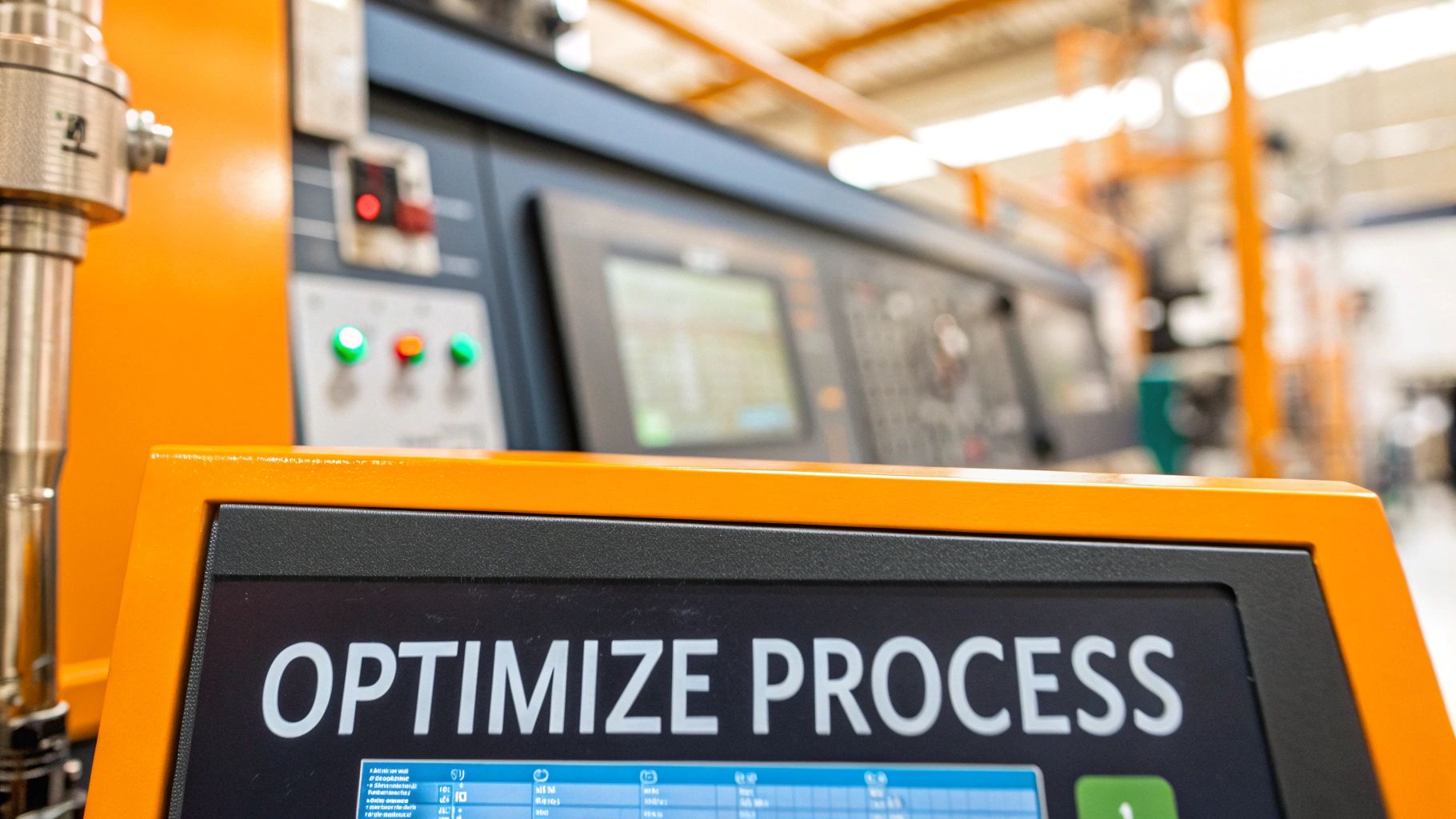
The success of an SLM metal printing process often depends on one key element: build orientation. This seemingly simple decision significantly impacts the final part's integrity, surface finish, and how it performs mechanically. This section explores how strategic orientation in SLM can dramatically improve results.
Understanding the Impact of Build Orientation
A part's orientation during SLM directly influences several crucial aspects. It affects support structure generation, essential for any overhanging features. Orientation also impacts surface roughness. Choosing the right orientation can result in smoother surfaces, reducing the need for post-processing.
Build orientation also dictates the direction of stress lines within the part. Aligning these stress lines with expected loads during use can greatly improve the part's strength and durability. For example, a turbine blade printed vertically might have different strength properties than one printed horizontally. This highlights the need for careful orientation planning in SLM metal printing optimization.
Balancing Competing Priorities
Finding the optimal build orientation involves juggling competing priorities. Build speed is a constant consideration. Some orientations minimize support structures, resulting in faster build times. Material efficiency is another important factor. Less support material means less waste and lower costs.
Post-processing requirements also play a role. Orienting the part to minimize surface roughness can lessen or even eliminate costly and time-consuming finishing steps. The key to efficient, high-quality SLM production is finding the sweet spot among these priorities.
Predictive Tools and Software Solutions
Luckily, technology provides tools to predict orientation effects before production starts. Specialized analytical frameworks and software solutions simulate the SLM process, letting engineers test different orientations and their impact on various parameters. This predictive power enables smart decision-making, potentially saving thousands in wasted material and machine time, which is a major advantage for SLM metal printing optimization.
Solving Common Orientation Challenges
Even with the best tools, orientation problems can arise. A common issue is support structure removal. Intricate supports, while sometimes necessary, can be difficult to remove without damaging the part. Smart orientation choices, however, can minimize the need for complex supports, simplifying post-processing. This is particularly crucial for parts with internal channels or complex lattice structures.
Another frequent issue is warping or distortion. Thermal stresses during the build can cause parts to warp, especially with thin or elongated geometries. Optimizing build orientation and using pre-heating strategies can help manufacturers mitigate these issues and maintain dimensional accuracy. Addressing these challenges effectively helps manufacturers fully realize the potential of SLM and consistently produce top-quality metal parts.
Material-Specific Techniques That Leading Experts Use
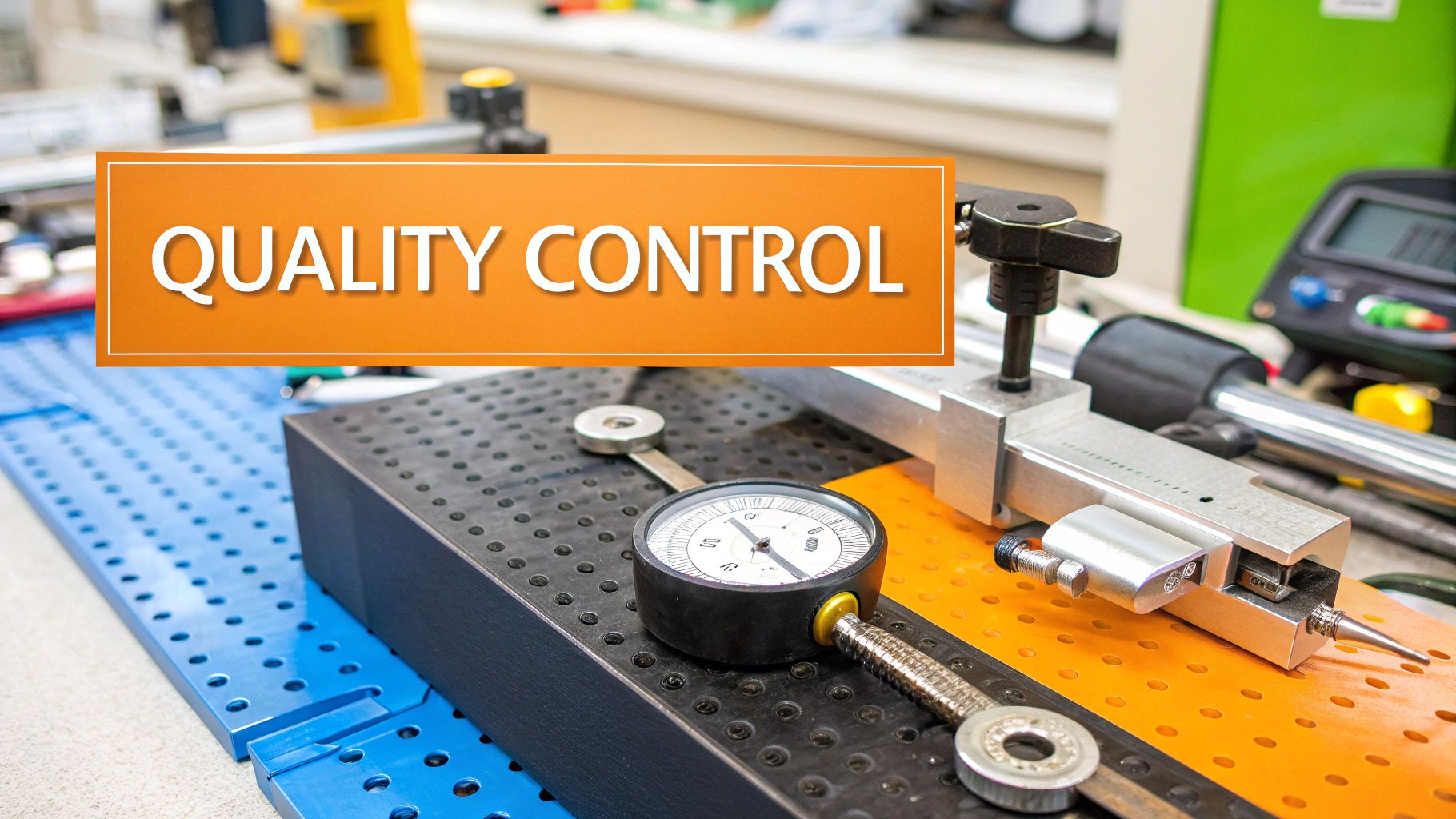
Not all metals react the same way in Selective Laser Melting (SLM). Understanding this is a key differentiator for top manufacturers. This section explores how these experts tailor their SLM techniques for various metal alloys, achieving outstanding results.
Tailoring SLM for Specific Alloys
Different metals possess unique properties that influence their behavior during SLM. Thermal conductivity, the rate at which a material transfers heat, plays a significant role in melt pool dynamics. Reflectivity, the amount of laser energy reflected by the metal, affects energy absorption and the melting process. Even subtle differences in melting behavior necessitate parameter adjustments for optimal outcomes.
Leading manufacturers recognize these nuances, understanding that a single approach won't work for every material. They carefully adjust their SLM processes for specific alloys, such as titanium, aluminum, tool steels, stainless steels, and superalloys, optimizing parameters for each. This precise approach to SLM metal printing process optimization ensures top-quality parts.
Titanium, Aluminum, and Steels: A Closer Look
Consider titanium, a crucial material in the aerospace sector due to its high strength-to-weight ratio. Its low thermal conductivity and high reflectivity necessitate precise control of laser power and scan speed. This prevents overheating and guarantees the desired mechanical properties. Aluminum, prized for its light weight, poses different challenges. Its high thermal conductivity requires careful adjustments to hatch spacing and layer thickness to maintain uniform density and prevent porosity.
Tool steels and stainless steels, each with their distinct applications, require their own specific parameter sets. Tool steels, renowned for their hardness and wear resistance, need tightly controlled parameters to achieve the desired microstructure. Stainless steels, favored for their corrosion resistance, demand carefully chosen parameters to prevent cracking and ensure optimal mechanical properties.
Tackling Challenging Materials: Copper and Refractory Metals
Some materials present even greater difficulties. Copper alloys, with their high reflectivity and thermal conductivity, are notoriously tricky to process with SLM. Refractory metals, known for their exceptionally high melting points, require specialized equipment and finely tuned parameters to achieve successful builds.
Experts are tackling these challenges with advanced techniques. Preheating the build platform, modifying laser parameters, and optimizing powder characteristics are some of the strategies used. Mastering these techniques expands the capabilities of SLM, allowing for the production of components from these unique and demanding materials.
Material-Specific Quality Control and Powder Management
Quality control is crucial in SLM, particularly when working with a range of materials. Experts use material-specific quality control methods, from monitoring powder composition and particle size distribution to stringent post-processing inspection. This guarantees consistent performance across all materials.
Powder management is equally critical. Correct handling and storage prevent oxidation and contamination, preserving powder quality and ensuring consistent results in SLM metal printing process optimization. The following table summarizes recommended SLM parameters for different metal alloy categories and their common applications.
To understand the parameters involved in SLM, take a look at the following table which details specific recommendations for different metal alloys and their applications.
| Material Type | Recommended Laser Power | Optimal Scan Speed | Layer Thickness Range | Common Applications | Special Considerations |
|---|---|---|---|---|---|
| Titanium Alloys (e.g., Ti6Al4V) | Moderate to High | Moderate | 20-50 µm | Aerospace, Medical Implants | Prone to oxidation, requires inert gas environment |
| Aluminum Alloys (e.g., AlSi10Mg) | High | High | 20-60 µm | Automotive, Aerospace | High thermal conductivity, susceptible to porosity |
| Tool Steels (e.g., H13) | Moderate | Moderate | 20-40 µm | Mold Making, Dies | Requires careful control of cooling rates to achieve desired hardness |
| Stainless Steels (e.g., 316L) | Moderate | Moderate | 20-50 µm | Medical Devices, Food Processing | Good corrosion resistance, potential for cracking |
| Nickel-Based Superalloys (e.g., Inconel 718) | High | Low | 20-40 µm | High-Temperature Applications | Challenging to process due to high melting point |
This table offers a general overview. Optimal parameters will vary depending on the specific machine setup and the desired part properties. This emphasis on material-specific strategies and quality control sets leading SLM manufacturers apart. They achieve exceptional results with a wide array of materials, consistently producing high-quality, complex metal parts.
Statistical Methods That Eliminate Guesswork
Moving past trial and error in SLM metal printing is essential for achieving reliable, high-quality results. This is where statistical methods offer a systematic approach to optimizing the SLM metal printing process. This section delves into how techniques like Design of Experiments (DOE), Analysis of Variance (ANOVA), and Response Surface Methodology (RSM) are changing SLM processes for the better.
Design of Experiments (DOE): A Structured Approach
DOE provides a structured framework for planning and executing experiments. Rather than randomly adjusting parameters, DOE guides users through a methodical process of varying factors to observe their effects. This allows for the efficient identification of key parameter relationships and optimal settings. Think of it like baking a cake: methodically changing oven temperature, baking time, and ingredient amounts reveals their impact on the final product. You might be interested in: How to master laser technology.
Analysis of Variance (ANOVA): Identifying Key Factors
After collecting data from DOE experiments, ANOVA helps determine the statistical significance of each factor. It separates the actual effects of parameter changes from random variations, showing which parameters have the greatest impact on part quality. This is like identifying which cake ingredients really matter for taste and texture.
Response Surface Methodology (RSM): Mapping the Optimal Landscape
RSM takes optimization a step further by creating a mathematical model of the relationship between process parameters and the desired output. This model, visualized as a "response surface," helps pinpoint the exact parameter combination that yields the best results. Imagine this response surface as a topographic map, highlighting the "peak" where the ideal parameter combination resides.
Practical Steps for Implementation
Putting these statistical methods into practice involves several key steps:
- Designing the experiment: Selecting the relevant factors, their ranges, and the experimental design.
- Collecting data: Carefully measuring the output variables for each experimental run.
- Analyzing the data: Applying ANOVA and RSM to identify important factors and optimal settings.
- Validating the results: Confirming the optimized parameters through further experiments.
Real-World Impact and Benefits
These techniques aren't just theoretical tools. Leading manufacturers are using them to achieve notable improvements in part quality, defect reduction, and increased process stability. This systematic approach reduces costly trial and error iterations, making SLM metal printing more efficient and predictable.
The practical advantages of using these statistical methods are substantial:
- Reduced defects: By identifying and controlling key process parameters, manufacturers can significantly reduce defects like porosity and cracking.
- Improved part quality: Optimizing parameters leads to better mechanical properties, surface finish, and overall part performance.
- Increased process stability: A statistically optimized process is more robust and less susceptible to variations, delivering consistent results.
- Reduced lead times: Minimizing trial and error contributes to shorter development cycles and faster time to market.
By embracing statistical methods, manufacturers unlock SLM’s full potential, shifting from guesswork to a data-driven process. This translates to significant improvements in efficiency, cost-effectiveness, and the final product's quality.
Real-Time Monitoring Systems That Prevent Failures
The future of SLM metal printing depends heavily on predicting and preventing problems before they affect production. This means using real-time monitoring systems that give immediate feedback on the process. This section explores some important monitoring technologies, including melt pool sensors, layer imaging, and acoustic emission detection, that are changing quality assurance in SLM metal printing process optimization.
Melt Pool Monitoring: Observing the Heart of the Process
Melt pool monitoring uses high-speed cameras and advanced sensors to observe the melt pool as it's happening. These systems capture important data like melt pool size, shape, and temperature. This data gives key insights into how the process is working, allowing for quick detection of anything unusual. For example, changes in melt pool size could mean inconsistent powder distribution or laser power fluctuations. These issues can be fixed immediately, preventing bigger problems down the line.
Layer Imaging: Ensuring Each Layer is Perfect
Layer imaging systems take detailed pictures of each new layer as it's created. These images are then checked against the intended design, allowing for fast identification of defects like poor fusion or unwanted voids. This immediate feedback allows for corrections in the next layers, minimizing wasted material and enhancing the quality of the finished part. This layer-by-layer checking greatly improves SLM metal printing process optimization.
Acoustic Emission Detection: Listening for Hidden Issues
Acoustic emission detection uses highly sensitive microphones to pick up ultrasonic sound waves created during the SLM process. These sound waves become a sort of "signature" for the process. Any shifts in these sound patterns can point to problems like cracking or spatter, even before you can see them. It's similar to listening for a small knock in a car engine – it can reveal hidden issues before they cause a major breakdown.
Closed-Loop Control Systems: Automating Quality Improvement
The real advantage of real-time monitoring is its ability to connect with closed-loop control systems. These systems automatically fine-tune process parameters based on what the sensors tell them. For instance, if a melt pool sensor detects a temperature drop, the system can automatically increase the laser power to make up for it. This automatic adjustment significantly improves process consistency and minimizes waste, contributing directly to better SLM metal printing process optimization.
Predictive Power Through Machine Learning
Innovative companies are taking real-time monitoring a step further by using machine learning algorithms. These algorithms examine massive amounts of sensor data, learning to spot patterns that could predict potential quality problems. This means issues can be anticipated and avoided before they happen, maximizing productivity and part quality. This predictive capability represents a big leap forward in SLM metal printing process optimization.
Implementation Strategies and ROI
Putting real-time monitoring systems into place means selecting the right technologies for your particular needs and integrating them smoothly into existing production workflows. While there's an initial investment, the advantages, such as less waste, higher quality, and increased productivity, result in a measurable return on investment. These systems help manufacturers take control of their SLM processes, transitioning from reactive problem-solving to proactive quality management – a critical part of successful SLM metal printing process optimization.
Implementing Optimization That Transforms Production
Transitioning research findings into actual production with Selective Laser Melting (SLM) requires a structured approach. This section offers a practical guide for integrating optimized SLM processes into your daily operations, regardless of your company's size or resources.
Validation and Qualification: Ensuring Consistent Quality
Effective validation protocols are essential for successful SLM metal printing process optimization. These protocols confirm that the optimized process consistently delivers parts meeting the required specifications. This involves thorough testing and analysis, ensuring improvements in mechanical properties, surface finish, and dimensional accuracy are reliably achieved.
Qualification procedures are the next step. These procedures demonstrate the long-term stability and repeatability of the optimized process. This usually means running multiple production runs under controlled conditions, tracking key performance indicators, and meticulously documenting the results. This builds confidence in the process's ability to consistently create high-quality parts.
Standardization completes the process. Implementing standardized operating procedures (SOPs) documents the optimized process parameters, materials, and operating conditions. This guarantees consistency across production runs and reduces variations due to operator error or equipment differences.
Knowledge Transfer and Documentation: Protecting Your Investment
Successful SLM metal printing process optimization depends on seamless knowledge transfer. Moving optimized processes from R&D to production needs clear communication and team collaboration. This might include workshops, training sessions, and comprehensive documentation.
Thorough documentation isn't just for knowledge sharing; it's vital for protecting intellectual property. Well-documented procedures, parameter settings, and material specifications safeguard valuable process knowledge and support continuous optimization. This documentation acts as a guide for operators, engineers, and technicians, ensuring everyone adheres to best practices.
Training and Team Capability: Empowering Your Workforce
Training is key to implementing SLM metal printing process optimization. Well-trained staff can execute the optimized process effectively, troubleshoot any issues, and contribute to ongoing improvements. This training should encompass both the theoretical aspects of SLM and the practical use of the optimized parameters.
Building team capability extends beyond initial training. Ongoing learning, skill development, and knowledge sharing are essential for long-term optimization success. This might include mentoring programs, online resources, or attending industry events like conferences and workshops. For additional information on laser technology, check out this resource: Learn more in our article about laser technology.
Implementation Roadmaps and KPIs: Measuring Your Success
Developing an implementation roadmap provides a structured way to deploy the optimized process. It outlines the steps, assigns responsibilities, sets deadlines, and identifies potential challenges. This ensures a smooth and controlled transition from research to production.
Tracking key performance indicators (KPIs) is crucial for assessing the success of SLM metal printing process optimization. These KPIs might include metrics like part quality, production rate, material usage, and cost per part. Monitoring these KPIs allows manufacturers to measure the impact of optimization and pinpoint areas for further improvement. This data-driven approach maximizes the return on investment in SLM technology.
Ready to explore the Chinese laser technology landscape? Visit Laser Insights China for expert analyses, technical guides, and industry updates.
